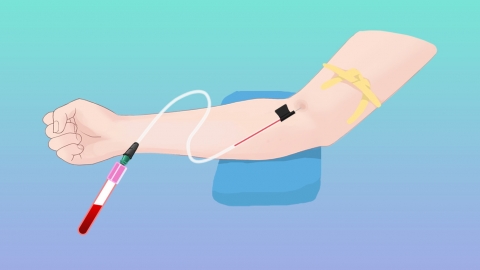What indicators should be checked for iron deficiency anemia?
Generally, iron deficiency anemia—a type of anemia caused by lack of iron in the body—requires several key tests for diagnosis, including complete blood count (CBC), serum iron-related indicators, ferritin, total iron-binding capacity (TIBC), and bone marrow iron staining. The details are as follows:

1. Complete Blood Count (CBC): A complete blood count allows evaluation of red blood cell parameters. Patients with iron deficiency anemia typically present with microcytic hypochromic anemia, characterized by mean corpuscular volume (MCV), mean corpuscular hemoglobin (MCH), and mean corpuscular hemoglobin concentration (MCHC) all below normal ranges.
2. Serum Iron: Serum iron reflects the level of free iron in the blood. In patients with iron deficiency anemia, serum iron levels are significantly reduced, usually falling below the lower limit of the normal reference range. This indicator directly reflects the body's iron stores and utilization.
3. Ferritin: Ferritin is a key marker of the body's iron reserves. In iron deficiency anemia, ferritin levels are markedly decreased, often dropping earlier than changes in serum iron or hemoglobin. This makes it a valuable early indicator of iron deficiency, aiding in early diagnosis.
4. Total Iron-Binding Capacity (TIBC): TIBC measures the total amount of transferrin in the blood available to bind iron. In iron deficiency anemia, due to insufficient iron, the liver increases transferrin production, leading to elevated TIBC. This rise contrasts with the decreased serum iron level and helps identify abnormalities in iron metabolism.
5. Bone Marrow Iron Staining: This test directly assesses the amount of hemosiderin and sideroblasts in the bone marrow. In patients with iron deficiency anemia, bone marrow smears show absent hemosiderin and a significantly reduced proportion of sideroblasts.
Patients should follow medical advice when preparing for these tests, such as avoiding strenuous exercise and fasting if required, to ensure accurate results. In daily life, consuming iron-rich foods like lean meat, animal liver, and spinach is recommended. Pairing these with vitamin C-rich foods can enhance iron absorption and help improve iron deficiency.





